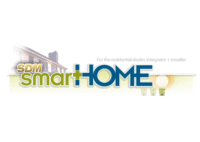Residential Technologies to Watch in 2014
It is an exciting time for many custom installers, but is one that shouldn’t be taken lightly as we are in a state of hyper change.

As 2014 dawns, it is an exciting time for many custom installers, but is one that shouldn’t be taken lightly as we are in a state of hyper change. Careful planning and knowledge are required for those looking to sell and service custom electronic products. In order to do that you must become the technology expert.
If your focus has been strictly on security, you may not know where to start when it comes to other residential technologies. So let us give you a head start with three technologies you should know more about.
Ultra HD/4K
The term “4K” is probably the one best known within the industry and has been used to describe a variety of different resolution formats. However, the correct specification for 4K comes from the commercial world and digital cinema. A true 4K picture (sometimes called 4K x 2K) has a resolution of 4096 x 2160, which amounts to an aspect ratio of approximately 17/9 or 1.89:1 (a ratio commonly used for widescreen films). Thus, the more appropriate term to use is Ultra HD (sometimes referred to as QFHD or Quad Full HD). Many terms have gone around, but it seems that UHD or Ultra HD will be the term accepted by most manufacturers for residential televisions.
While UHD and 4K displays are just hitting the market, it appears that penetration into homes may be faster than some expect. The rationale for quicker adoption rates for UHD/4K displays is strictly based on price. There are several very aggressive manufacturers who are selling or announced they will be selling UHD/4K flat panels at costs comparable to existing LCDs and plasmas. However, one must pay close attention to the actual specifications and, more importantly, the performance of these displays. Not all UHD/4K displays are created equally, as some will have UHD capability but not have the ability to up-convert or scale non-UHD content and thus may show lower resolution content poorly.
Stay tuned for a new white paper from CEDIA about 4K and Ultra HD. For more information on home technology, join the CEDIA mailing list at cedia.net.
HDMI 2.0
To accommodate the higher resolutions and frame rates of UHD/4K displays, HDMI LLC announced the HDMI 2.0 standard in September, up from HDMI 1.4a that was released in 2010. There are several major differences with HDMI 2.0, but it does not specifically mean that new cables are required. The change is in the transmission data rate, which increases to 17.82 Gbps (up from 10.2 Gbps). What this means is that HDMI Hi-Speed cables will support UHD/4K signals up to 60 frames per second. This is a significant leap in the amount of data transmitted and requires both the source and the display be HDMI 2.0-capable, as both the source and display must have 300 MHz silicon (most devices today still can only handle 225 MHz).
Other significant changes in HDMI 2.0 include a significant increase in audio transmissions by allowing up to 32 channels of audio, support of 1536 kHz audio, dynamic lip sync and 21:9 (2.35:1) aspect ratio for native cinemascope (anamorphic) displays. All of these changes are valuable and were needed in the industry. However, there will be lag-time before HDMI products hit the market, as it takes time to develop the product once the spec hits the market.
Wireless Audio
Some of the current buzz in the industry regarding wireless speakers has been coming from home technology professionals who are concerned about wireless speakers being a do-it-yourself (DIY) threat. While the option to simply connect devices over a wireless network clearly requires less physical labor than drilling holes and pulling cable, it does not by any means make it easier to create a reliable system. Wireless technologies have come a long way in recent years; however, with more wireless devices being crammed into homes every day, the available RF frequency spectrum has been filled to capacity and interference has become a major issue that these products must contend with in real-world applications.
Check out some archived webinars on wireless audio at cedia.net.
Looking for a reprint of this article?
From high-res PDFs to custom plaques, order your copy today!





